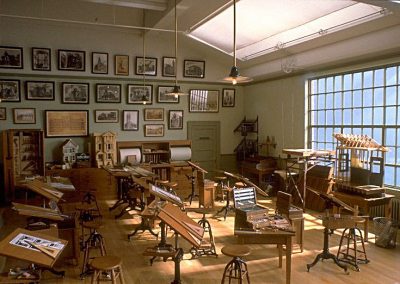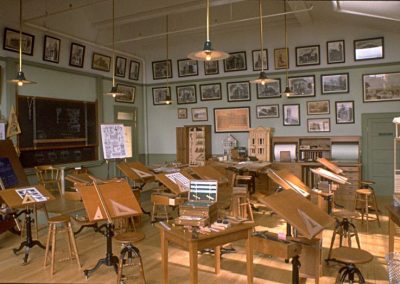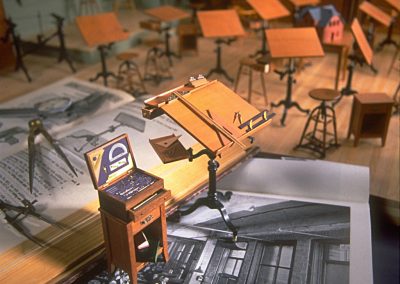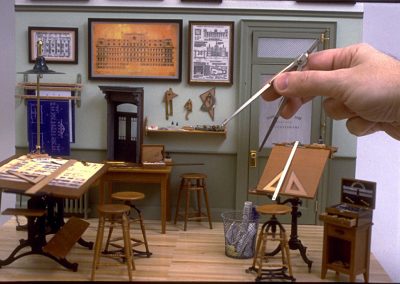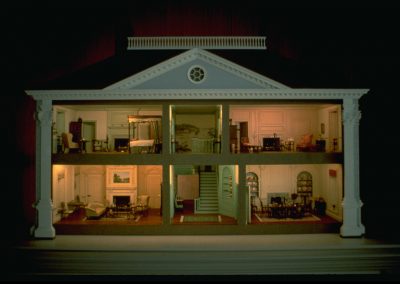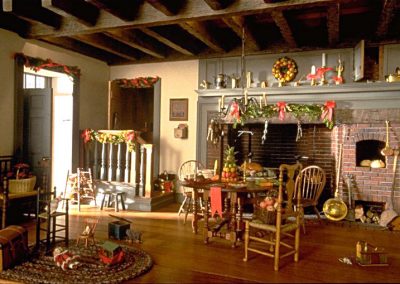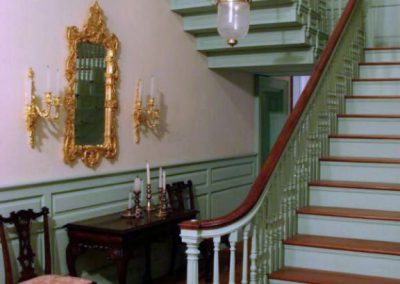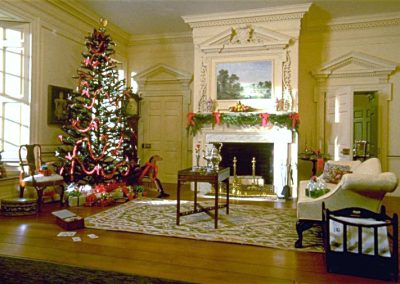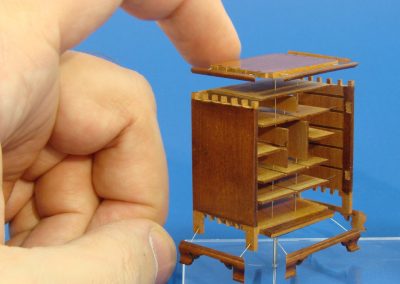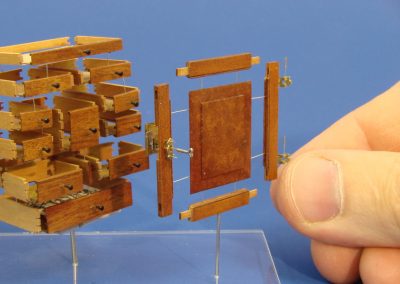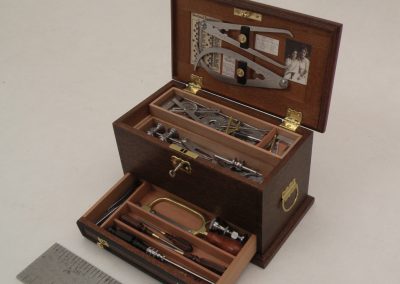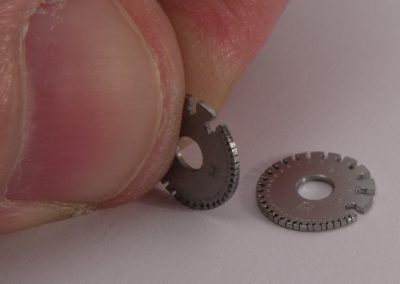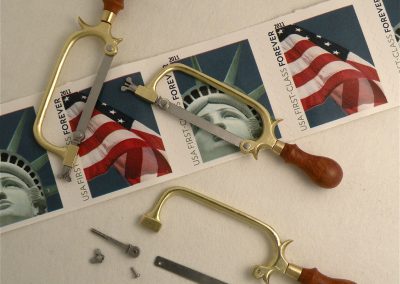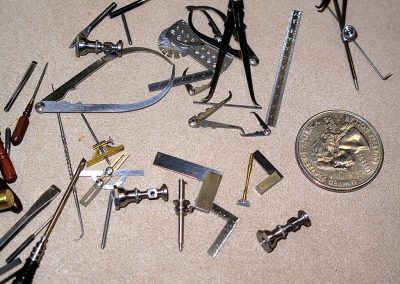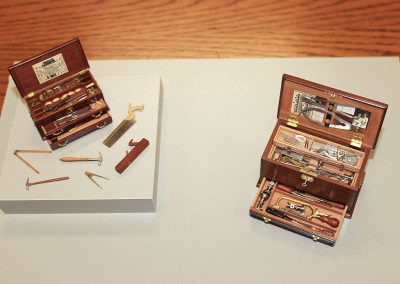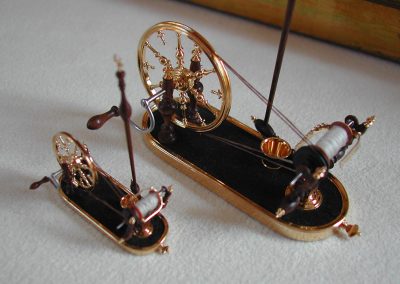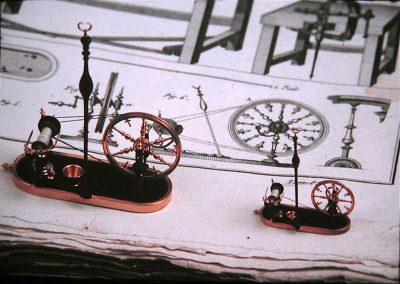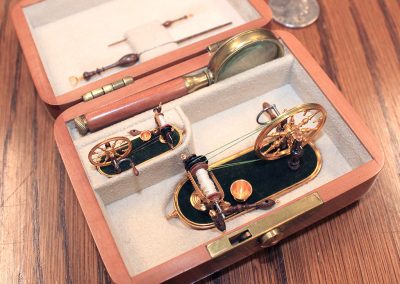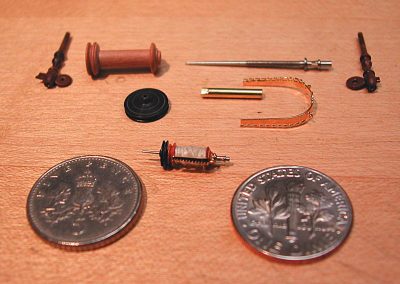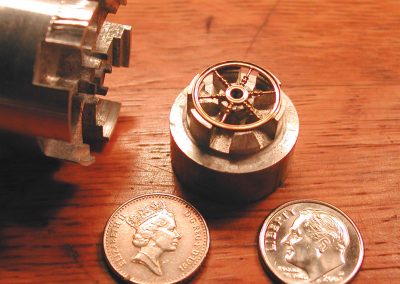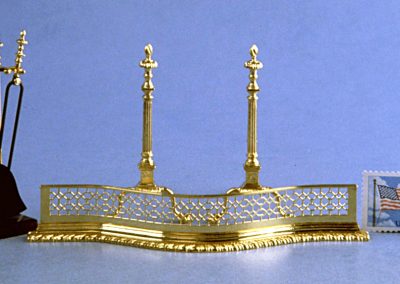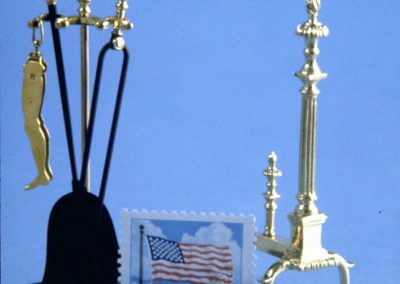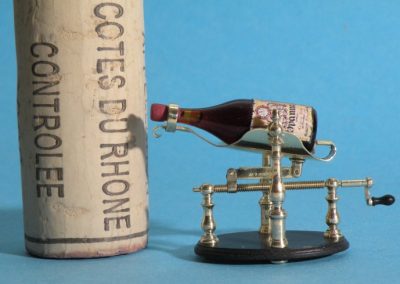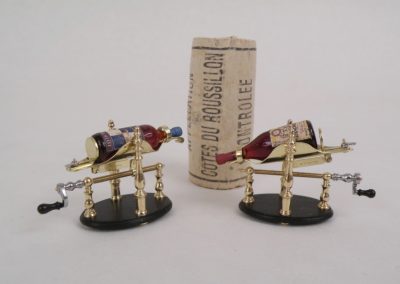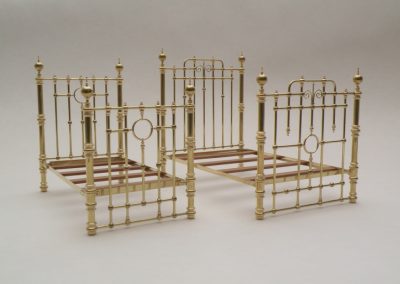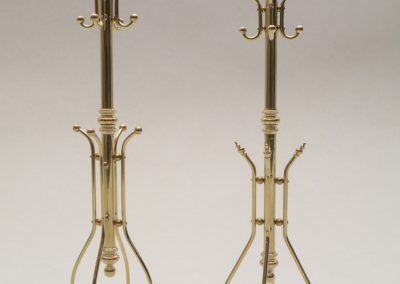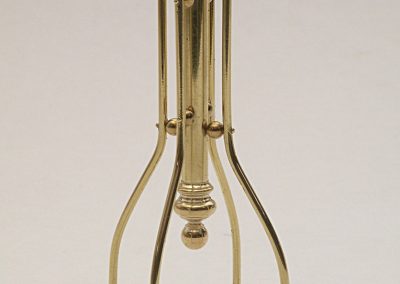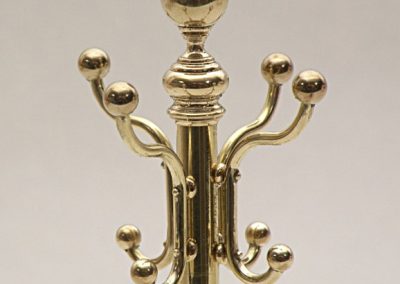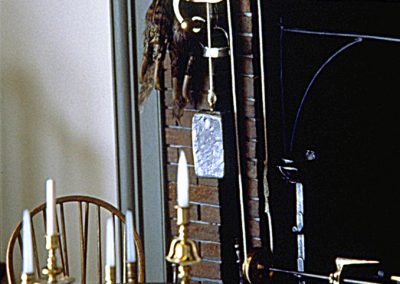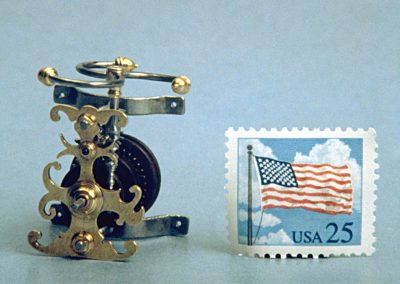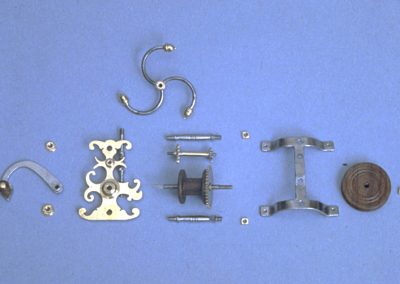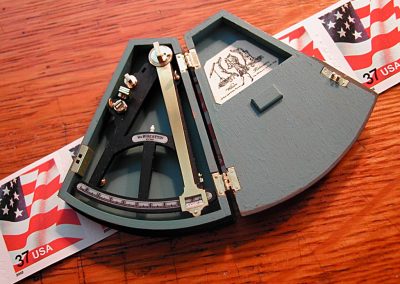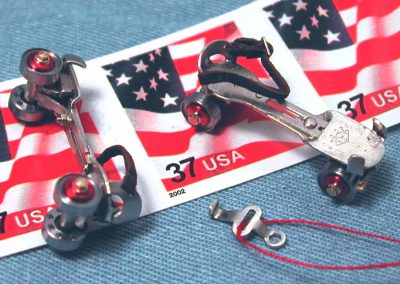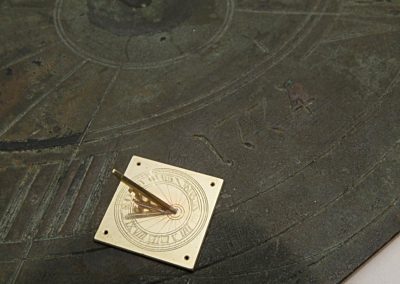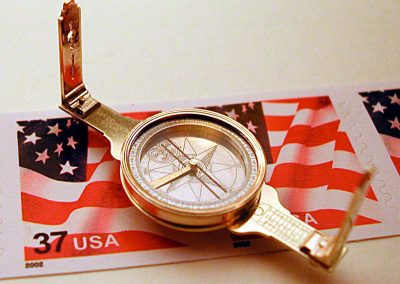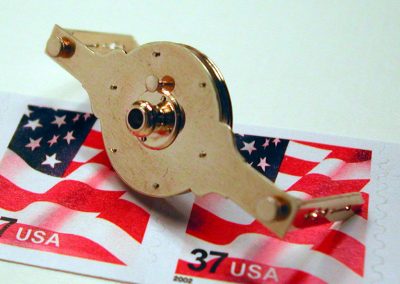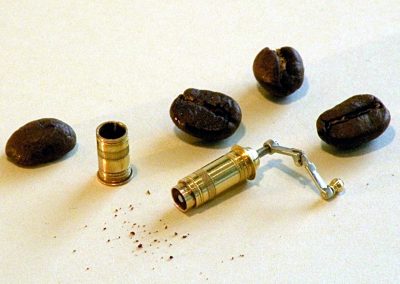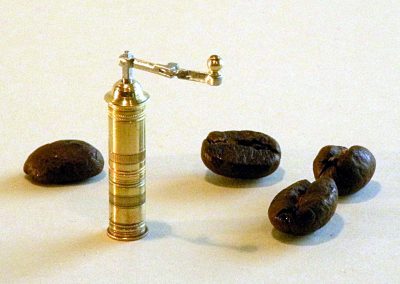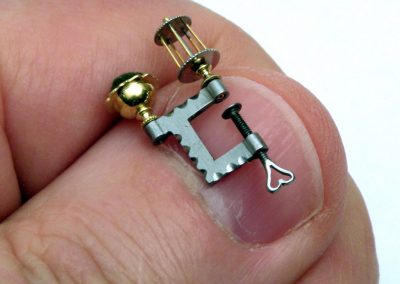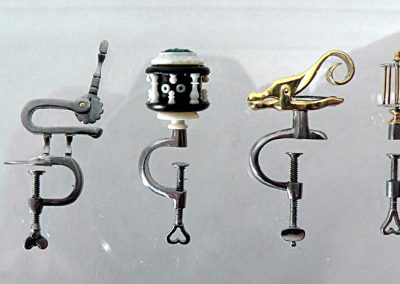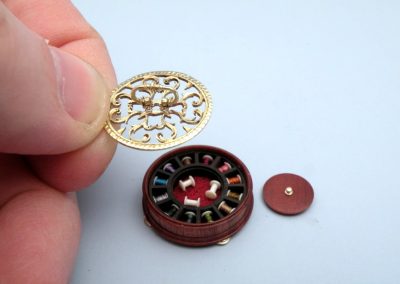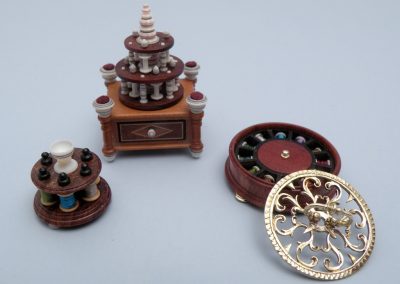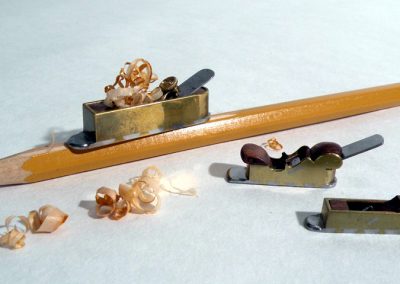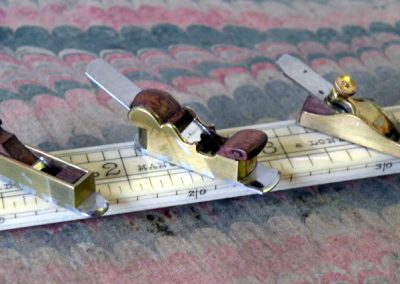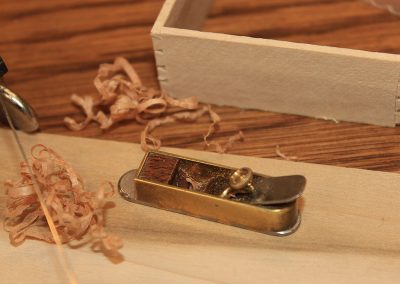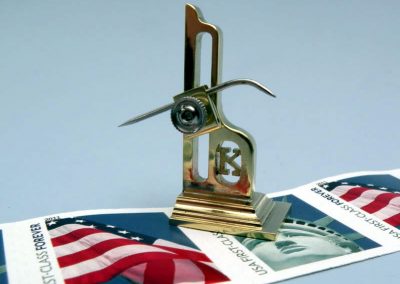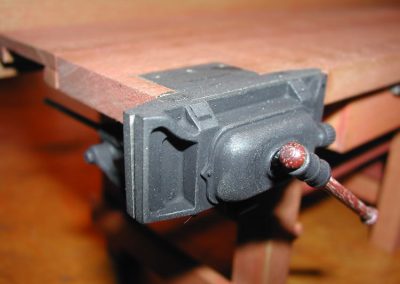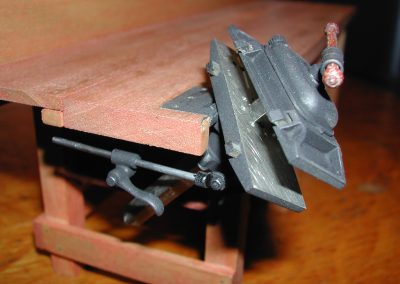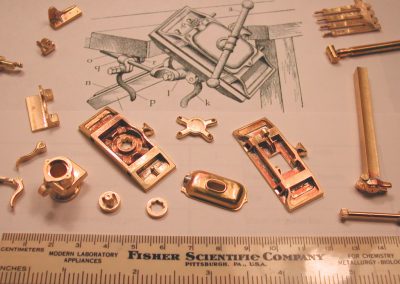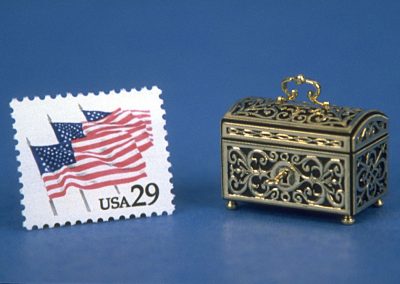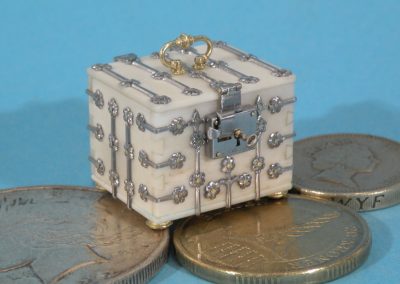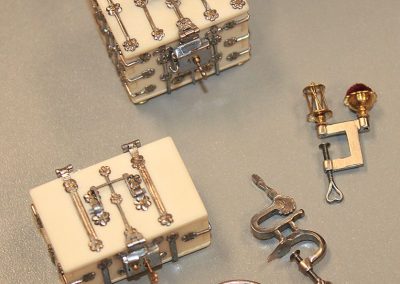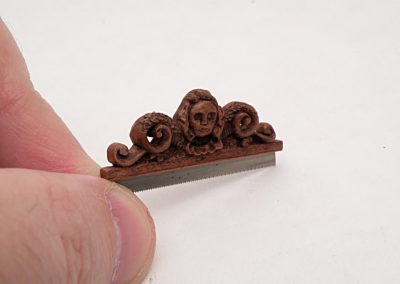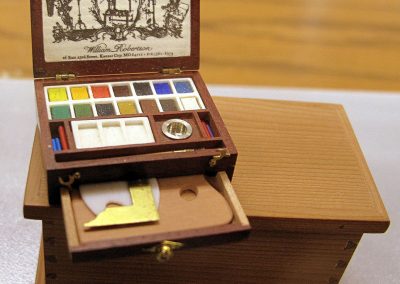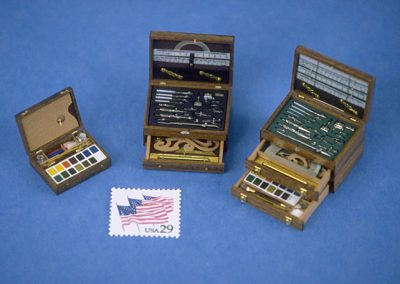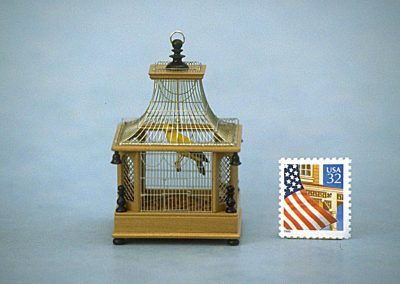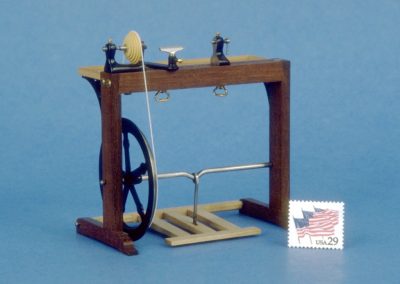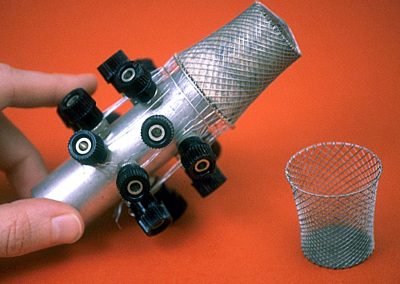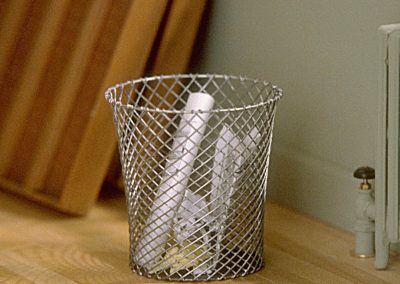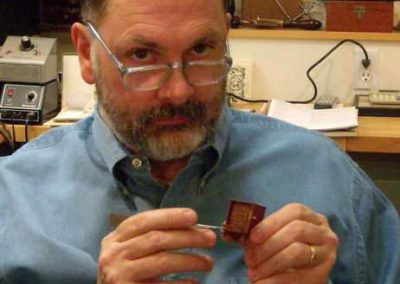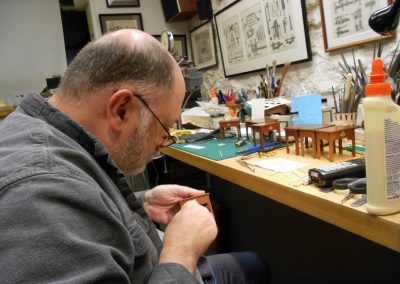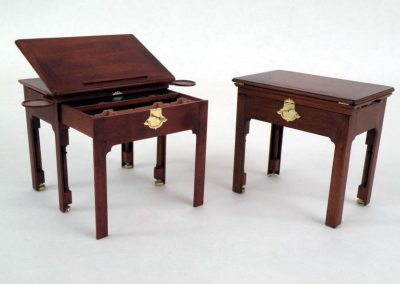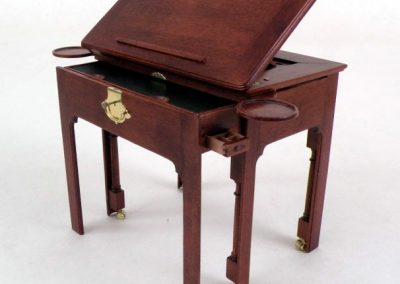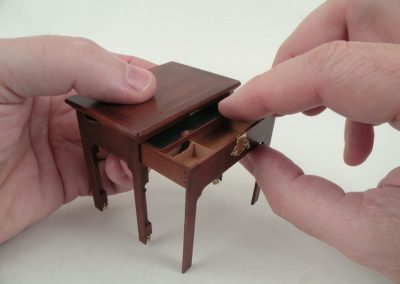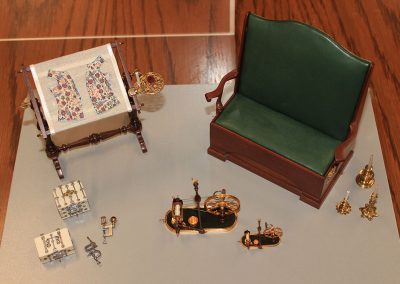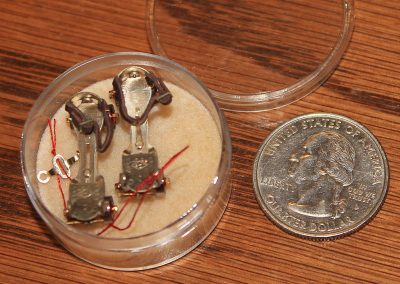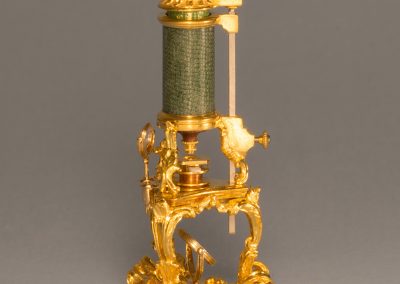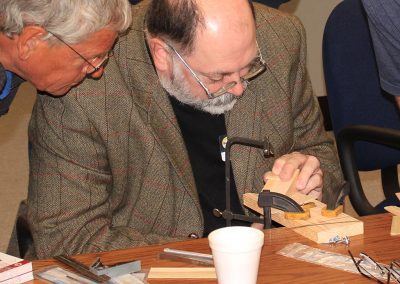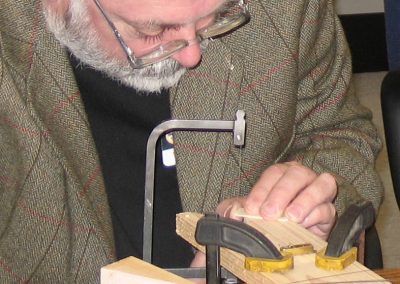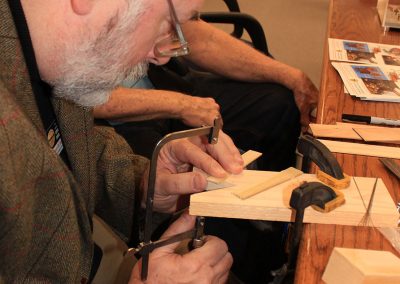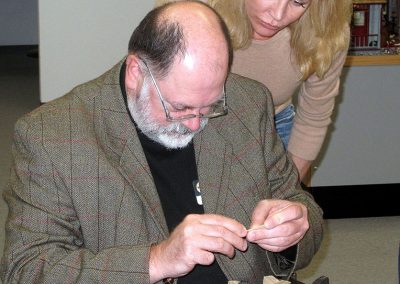Below you can view more photos of Bill Robertson’s impressive scale miniatures. Click on images to enlarge.
1/12 Scale Miniature Rooms
Miniature Drafting Classroom
Bill Robertson created this miniature drafting classroom in its entirety, and to the very last detail. The scene includes drafting instruments and drawing boards from a classroom before the computer era.
Miniature Drafting Classroom
Even the 1/12 scale photos on the walls, and the instructions on the blackboard, are real depictions from that era.
Miniature Architect’s Office
A miniature architect’s office circa 1900. Bill’s hand provides scale reference.
Twin Manors Miniature House
This model house, named “Twin Manors,” is one of a pair of 1/12 scale miniature 18th century American Georgian style houses. The Twin Manors are made from approximately 75,000 pieces, complete with working locks, etc. One of the two miniatures is on display at The National Museum of Toys and Miniatures in Kansas City, MO.
Twin Manors Kitchen
A close look inside the miniature kitchen from Bill’s Twin Manors house, decorated appropriately for Christmas.
Twin Manors Staircase
The staircase and landing in the miniature Twin Manors house presented quite a challenge, with its curved handrail and the many stiles supporting it.
1/6, 1/8, and 1/12 Scale Miniatures
Chester County Spice Chest
A 1/12 scale Chester County spice chest from the 18th century. Bill’s hand-cut dovetails and working lock can be seen in the exploded view.
Machinist’s Chest
Bill’s 1/8 scale machinist’s chest, circa 1880. On a more personal note, the miniature photo of the two women in the lid of the chest was made from an old photo of two of Bill’s relatives.
Miniature Tools
This photo shows a variety of scale tools, from calipers and angle gauges to machinist’s jacks and a height gauge.
Tool Box and Machinist’s Chest
On the right is a 1/8 scale machinist’s chest, and to the left is a 1/12 scale gentleman’s tool box. Some scale tools from the box are displayed in front. Bill brought these and other miniatures to his award presentation.
1/12 and 1/6 Scale French Spinning Wheels
Bill’s 1/12 and 1/6 scale 18th century French table top silk spinning wheels.
1/12 and 1/6 Scale French Spinning Wheels
These miniatures are made of gold, gilded brass, steel, vespel, kevlar, pear wood, Bolivian rosewood, and antique velvet. Vespel is a high-tech plastic that was used for the round “leather” bushings, which were mortised and pinned through the wood turnings.
1/12 and 1/6 Scale French Spinning Wheels
The spinning wheels are packed into their beautifully crafted, lined wooden case, protecting the delicate pieces for travel.
Miniature Fireplace Andirons, Tools, and Fender
A postage stamp is placed by these tiny fireplace accessories for scale reference.
Miniature Hearth Scene
This hearth scene features small scale candleholders, a clock jack, and an 18th century automatic barbecue spit turner.
Vintage Roller Skates
Bill made these vintage metal Union Hardware Company #5 roller skates in miniature. They have leather straps and a skate key on a string.
Brass Sundial
This scaled-down brass sundial is actually sitting on the 1774 original. The miniature measures about 5/8” square.
Goldsmith Chandlee Surveyor’s Compass
This miniature Goldsmith Chandlee Surveyor’s Compass is based on an original from the late 18th century.
Wood Plane
This photo also shows a sample of one of Bill’s handmade dovetail joints in the background.
Emmert Pattern Maker’s Vise
This scaled-down vise can still open, close, tilt, and turn. The jaws taper and the dogs slide up, just like the original.
Emmert Pattern Maker’s Vise Parts
The miniature vise has 17 white bronze castings made from the brass patterns below. All parts are then machined and assembled.
European Chest
The following three photos show some of Bill’s miniature early European chests. This one was made from 18K gold and ebony. It has a working lock.
European Chest
This scale model chest was made primarily from steel, brass, and bone. It also has a functional lock.
European Chests
This photo shows two bone and steel chests, along with a tiny bobbin and pincushion that clamp to a sewing table.
Holtzapffel & Deyerlein Watchmaker’s Lathe
This miniature Holtzapffel & Deyerlein treadle-powered watchmaker’s lathe is from about 1810.
Drafting Room Waste Basket
Shown here is a miniature metal wire mesh waste basket, and the fixture Bill used to form and solder it.
Bill Working on the Architect’s Table
Bill Robertson finishing up his 1/12 scale miniature architect’s table.
Various Miniatures
On the left is an embroidery stand with a sewing kit clamped to the right side. In the upper right is a tall (relatively speaking), green leather covered seat. It turns into a canopy bed when folded out. In the foreground are two spinning wheels—one in 1/8 scale, and the other in 1/12 scale. On the right are several miniature brass candlesticks. These items were shown at the Craftsmanship Museum in February, 2015, when Mr. Robertson visited to accept his Craftsman of the Year Award.
Miniature Louis XV Style Microscope
This marvelous miniature was copied from a full-size microscope in the Metropolitan Museum of Art in NYC. Bill was able to examine the original, which was made by Claude-Simeon Passement of Paris. The 2” tall miniature is made of 24K gold, nickel silver, wood, glass, and shagreen. The scale model has a functioning 3-element lens, with coarse and fine focus adjustments. The ivory, wire, and mica slide is made of 9 pieces. In total, there are over 100 parts in the miniature microscope. It was screwed and riveted together by Bill. The finish is burnished with dog’s teeth, as pure gold will not take polish. Bill made five of these incredible pieces in 1998. Bill’s miniature microscope has been exhibited at a number of museums around the world. At the time of this writing in 2015, it was on display at the Nelson Atkins Museum of Art in Kansas City. After that, it was returned to the permanent collection of The National Museum for Toys and Miniatures.
Bill Demonstrating his Dovetail Technique
Bill Making Miniature Dovetails
The following photos show Bill demonstrating how he makes miniature dovetail joints. He cut a number of dovetails for visitors who came out to meet him at the Craftsmanship Museum. When making the dovetails, Bill only uses an X-acto knife and a jeweler’s saw from Rio Grande, along with #0000 “LaserGold” blades (also from Rio Grande).
Bill Making Miniature Dovetails
Bill made a simple tapered block, and a board with a “V” groove cut into it. Then he clamped it to the museum conference table. The tapered block is placed on the board where it overhangs the table, and the drawer piece is held down at the correct angle for cutting. That way, as Bill works the saw up and down, the proper angle its automatically cut on the dovetails.
Bill Making Miniature Dovetails
Once the angled cuts are made, and the board to be joined is marked with the X-acto knife, Bill removes the tapered wedge. He then makes the rest of the cuts straight up and down using the “V” cutout of the board clamped overhanging the table. Needless to say, after all these years of doing it, Bill makes the process look easy.
Bill Making Miniature Dovetails
All of the joints that Bill made snapped together perfectly, with virtually no space between any of the dovetails. It was a pleasure for visitors to watch a true master at work. This last photo shows one of the visitors, who also happens to own some of Mr. Robertson’s work, watching the process unfold in person.

